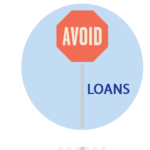Plan for Your Child’s Education
Key Features





One of the constant concerns in every parent’s mind is how to plan their children’s education. With the increasing cost of living and soaring inflation, it is natural for each parent to start planning to make sure their child (or children) has (or have) the best educational opportunities.
Set-out for you is a step-by-step guide for you so that you can find the best educational plan for children.The importance of education can never be underestimated, even with limited financial resources, the provision of quality education is possible.
Child Education Steps
1. Start planning at an early stage
As soon as you have a child, begin planning your child’s studies. Don’t wait until he or she comes of age. Most parents make the same mistake. The sooner you start, the better chance you have to reap the most benefits. Even if you are unable to start planning children’s education very early, start as soon as he or she is about 3 years old. A long-term plan helps because of the cumulative effect of your investments.
2. Always evaluate your Assets or Liabilities
Set a baseline before you start planning. Your assets will determine the type of security that can be provided to support education. Your liability, however, will determine how much you can spend in a realistic manner. If you plan to buy a home while raising your children and give them the best education plan for the children, a cost benefit analysis of your assets and liabilities can help you make the right decisions. It is also important to have a clear vision of any future investments.
3. Determine how much Corpus amount you would like to have
Over the years, the cost of quality education increases. For example, look at the amount payable by someone who enrolled in an IIM for an MBA – 19.8 lakhs INR. That is about 400% more than the cost of the same course in 2007. If you want your child to attend an international school or go abroad to graduate, the costs are even more expensive. As a result, it is important to estimate the approximate amount to be spent on education. You can assume that there will be a guaranteed inflation of 8-10% each year in education. As soon as you know the approximate amount, choose the child’s educational plan that is right for you.
4. Invest and Save Consistently
No investment can reap the desired profits if it is not made systematically. Save and invest consistently. Once you know the target number, figure out the monthly amount you need to save per month to make the investment work. Even smaller amounts that are invested on a regular basis can help you reach your target. This is extremely useful advice if you are not financially well off but would like to invest in a good child education plan. Look at your yearly earnings and see how much you can save after meeting all your liabilities. Financial discipline is important to carry out any investment. Avoid unnecessary expenses to increase the corpus of savings.
5. Invest Smartly
It’s never a great idea to put all your savings in one investment vehicle. You have chosen the right investment options that will help you achieve your goal. It is also important to diversify your investment portfolio to ensure that your risks are allocated.
In addition to educational plans for children, think about investing in equity mutual funds. These are very good for a period of more than five years. You may switch to a debt pool as you get closer to your investment horizon.
Choose SIPs to make mutual fund investments as they help maintain the consistency of investments. If your investment portfolio is balanced and well planned, you will be able to achieve exponential returns.
6. Be prepared for the unexpected
Even the best schemes can go wrong. Never forget that you cannot be ready for every possible educational expense. Even with the most careful planning, you could find yourself in a situation where planned spending has increased significantly. We have very little control over the market and rates of inflation. So keeping a buffer amount is always a good idea. It will help you in the rainy days. But at the same time, don’t dip into life savings when unexpected events occur for your child’s education. It is not a prudent decision to use your retirement fund to support the extra cost of your child’s education. Under these circumstances, you can always explore more investment options.
